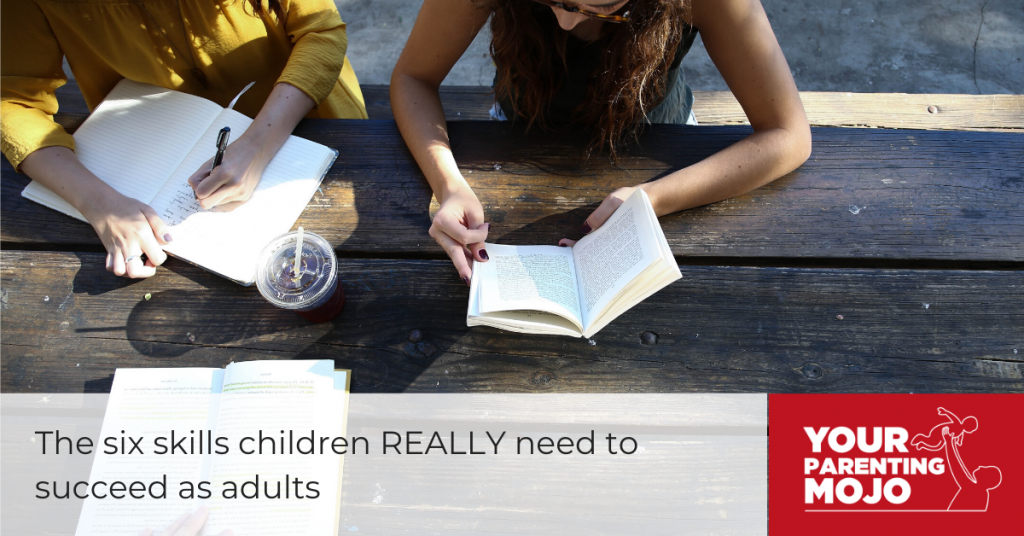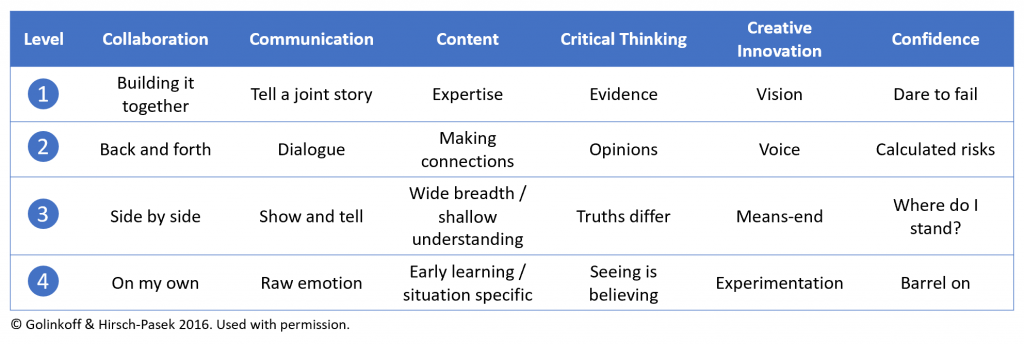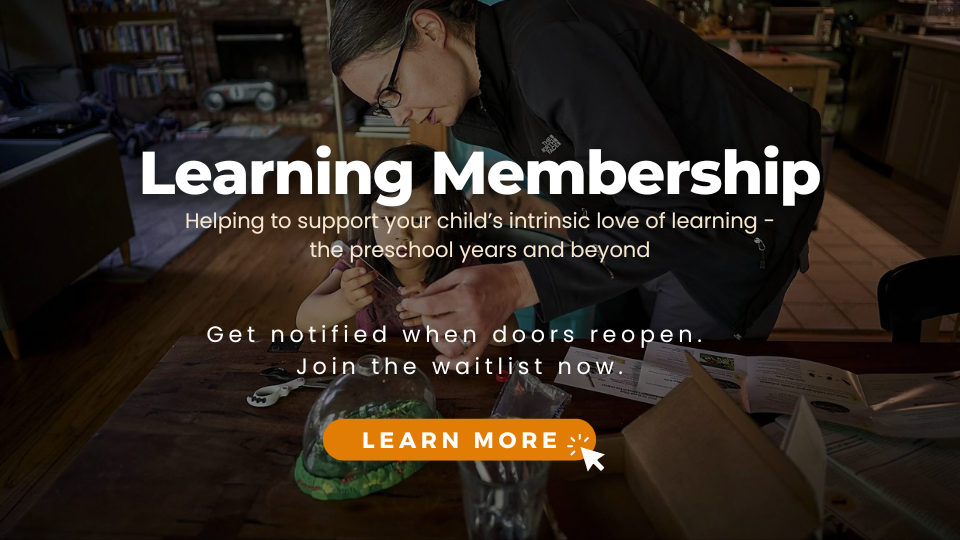The six skills children REALLY need to succeed as adults

Have you heard of Gitanjali Rao? She’s from Colorado, and she was named America’s Top Young Scientist in the Discovery Education 3M Young Scientist Challenge in 2017 – at age 11. She’s a brilliant kid. Her award-winning project was an inexpensive device that detects the presence of lead in tap water faster than currently used methods.
When we read articles about children who achieve so much so early, it’s tempting to try to figure out what her parents had done to help her rise to success at such a young age. Gitanjali mentions loving science and recalls playing with science kits at age three. At nine she and her parents published a book together. She plays three instruments and three sports. She’s also attending a STEM school.
Is this what I should be doing for my daughter? Should I be buying her science kits? Signing her up for music and sports activities? Should we be writing books together? Even if my child doesn’t achieve this much this young, will what I’m doing prepare her for acceptance into elite universities if she decides she wants to do this?
Dr. Roberta Golinkoff and Dr. Kathy Hirsch-Pasek, co-authors of the widely respected books Becoming Brilliant and Einstein Never Used Flashcards, argues that traditional school curriculum neglects to prepare kids for the future. It doesn’t sound like the learning Gitanjali did was traditional, though. Will it prepare her for the future? Is the path her parents chose one that would work for others? What do children really need to succeed in life – and how should we even define ‘success’?
The Six Skills Children Need (And Four Levels of Mastery)
Golinkoff and her co-author, Dr. Kathy Hirsh-Pasek, identified six core skills that kids will need to succeed in the 21st Century. These “6Cs” will help kids become scientists, entrepreneurs, and people who lead change-making organizations. These are the skills they’ll need to thrive in their rapidly changing world. These are the areas where we should focus our energy in supporting our children’s learning.
There are four levels of mastery within each of the six “C” categories pictured in the table below; many (most?) people never make it to the final level of these areas. It’s a bit like Maslow’s hierarchy of needs – even though many people never arrive at self-actualization, the top of Maslow’s hierarchy, the model is still useful because the hierarchy is a tool to use to prioritize needs. The 6Cs are a tool to use to help identify strengths and growth areas, so we can see where we’re doing well and where our skills still need development. And I say ‘our’ skills because we may identify some areas that we need to improve on these skills as well.
Learning is a journey! I’m still on my journey. You are still on your learning journey, and so is everyone else. Our job is not to ‘teach’ our children, but to provide guidance – and we don’t need any fancy tools – or even a lot of specialized knowledge to do this. Let’s look at how you can incorporate every one of the 6Cs into a basic household chore that may currently seem like an activity that should be rushed through so you can get to the real learning activities: and that’s laundry. (Yes: laundry!)
How to Create Learning Experiences at Home
I’m confident that you have plenty of opportunities to work on laundry-related tasks with your child. Probably far more opportunities than you’d like! Toddlers and preschoolers can do quite a bit when it comes to laundry, and it is a great opportunity to incorporate all of the 6Cs.
1. Collaboration: Showing Children How to Work Together
The first skill area is collaboration. The scale of collaboration goes from working alone to building together. Simply by including your child in this chore, you are teaching collaboration. The two of you are working side-by-side on a task. Your child can help you put clothes into the washing machine, take clothes out of the dryer, give you pieces of laundry to fold, and open drawers for you to put things away.
Self control falls under the umbrella of collaboration. Natural consequences will demonstrate the importance of self-control when working on laundry. For example, if your child is jumping on the bed where you are folding laundry and knocks a pile of folded laundry over, the chore is going to take longer to complete. They need to maintain control over their bodies to get this job done! As they continue to participate in this household chore, they will recognize that this is part of running a household. Everyone has to contribute, and in time you will move beyond a “back and forth” level of collaboration to working alongside each other and building projects together.
2. Communication: Teaching Children to Give, Receive, and Share Information
By the time a child can do anything with laundry, they are probably able to do more than just express “raw emotion,” but the next level, “show and tell” is just getting started. You can model this for them if they are still in the early stages of learning to talk. Children are learning about the give and take of a conversation. If you say, “Look, this is your red shirt,” and they make a noise of some sort, respond to them as though they have made an interesting point. “Yes, you did wear this shirt yesterday in the park. “You’re right, there are some yellow letters on it, too.” When you respond to them, you are demonstrating that their voice matters. You are introducing the basics of a back-and-forth conversation.
To be able to communicate at a more advanced level, they need to have lots of words. Clothing is a nice concrete way to introduce lots of vocabulary. Children are usually fascinated by clothing. Adult clothing is so big! Clothing is so colorful! It’s so warm when it comes out of the dryer! Any kind of back-and-forth conversation you can engage in is moving your child toward the “dialogue” level of communication so you can begin to tell stories where you both fill in relevant details.
3. Content: Giving Children a Strong Knowledge-Base
When I think of teaching content, I think of traditional school skills, facts, and general knowledge. When it comes to laundry, there are lots of opportunities to discuss these in conjunction with the other skills. Content for preschoolers would include labeling objects, colors, directional words, letter identification, and counting. Directional words and phrases come out naturally while working on laundry—at the bottom, on top of, inside, underneath, next to, and the very complicated—inside-out. You can name the articles of clothing, the colors on them, and practice counting as you sort, fold, and distribute laundry.
Pre-reading skills are also part of content. Phonemic awareness is the technical term for wordplay, like rhyming, alliteration, and counting syllables, that will eventually help them read new words. Noticing things like the blue shirt has a picture of a ball will help your child start recognizing beginning sounds. You can also get very silly and makeup rhyming words for different articles of clothing to start working on phonemic awareness.
There is less opportunity to get really deep on content with laundry than there is on other topics where your child has a real interest in diving deeply into their passions, make connections across them, and then demonstrate their expertise to others (often even to adults!).
4. Critical Thinking: Asking and Answering Questions With Your Children
Believe it or not, the laundry provides lots of opportunities for critical thinking! For starters, do you sort your laundry? Deciding whether to put the laundry into piles of light and dark is a great way to start teaching critical thinking. Next, there’s the question: is there too much in the washing machine? By talking through how you make this decision, you are showing your child how you think critically.
If your child is asking “why” questions, working through these with them is a great way to encourage critical thinking. Curiosity is a wonderful trait! You want to nourish their curiosity; that’s what’s going to drive them forward on their learning journey! When they ask why you are putting the clothes into the drawer, you can ask them why they think we do this. The next why-question is where you have to start thinking. Why do we keep the clothes in the drawer? So many parents stop these conversations with their kids, and that’s really tragic. It’s such a wonderful opportunity to engage with kids. Golinkoff says that the continued desire to find out more is more important than what they learn. Try to answer as many why questions as you can if your children are asking and listening – and don’t just answer by providing The Answer, but instead challenge them to share their opinions and ask what evidence they have to support their opinions (“Why do you think that?”). Before you know it, you’re at the highest mastery level for critical thinking.
5. Creativity: Inspiring Children to Problem Solve in New Ways
Speaking of creativity, you can find ways to be creative and innovative about laundry; you probably already do this. For example, if you want to get your favorite shirt into the washing machine, but it’s full, you have a problem to solve. You have options.
By talking through your thinking process, you are modeling the creative problem-solving process. Maybe it would sound something like this, “Drat! The washing machine is full! I really want to wear this shirt tomorrow, but it needs to be washed. I could do another load of laundry after this, but I don’t want to. I guess I could wear a different shirt, but I really want to wear that one because [whatever your reason is]. I wonder if I can make room in the washing machine? Oh look, I won’t need to wear these pants for a long time. I only wear them on special occasions. I’m going to take these pants out. Now there’s room for my shirt!” In that short little monologue, you just modeled identifying the problem, identifying and evaluating multiple solutions, and choosing the one that worked best for you. This is already going on inside your mind, you just have to slow down enough to verbalize your thoughts.
You can also ask what ideas your child has for solving the problem, and if you accept their idea they learn that they have a voice, and that their voice will be respected when they share ideas – a critical step toward developing and sharing visionary ideas with others.
6. Confidence: Building Independence and Bravery in Children
The final C is confidence. Collaboration, communication, content, critical thinking, and creativity have all been building up to confidence. By engaging in this very useful task with your child, carrying on conversation, learning colors or counting, asking questions, and demonstrating creative problem-solving in action, they have already learned so much!
Confidence is most easily taught by us stepping back, rather than teaching. Yes, the first time your child folds a t-shirt it probably won’t be folded the way you like it done. Early on, simply “barrelling on” and making a contribution that’s seen as valuable is enough. Over time, your child will see how you fold t-shirts and copy you, or may ask you to teach them how to do it. They may take a calculated risk that you won’t care much if they mess it up and the payoff for rushing through the job (cartoon time?!) is worth the risk of getting caught. Or perhaps they might decide it’s not worth the risk… Either way, they’re on their way toward being willing to try something that might work or might not, and being OK with failure, and using failures as a springboard to success.
As you may have guessed, these same principles can be applied to many household tasks—making beds, organizing toys, cooking, and grocery shopping. You don’t need to buy expensive toys or programs to give your child a great education.
Your Child’s Learning Mojo
The research on the skills children need to be successful is so clear – and is in such direct opposition to conventional wisdom. We are always so worried about our children being ‘behind;’ we think they need workbooks, special toys, and flashcards (even though Einstein didn’t use them!). The skill of content is covered extensively in school even though children can essentially look up any fact that interests them rather than needing to memorize it, but where will they learn the other skills?
I’m creating the Your Child’s Learning Mojo membership and community to help parents support their child’s learning in ways that work and are based on sound research. We’ll begin by identifying your child’s interests (sounds so simple, but if you ask them they’re liable to throw out random topics rather than a topic of true interest) and discussing ways to develop that interest.
We’ll help you to stop being the “sage on the stage” who has to provide all the answers to your child’s questions and become the “guide on the side” who connects them with resources to answer their own questions. We’ll learn ways to document and communicate your child’s learning in authentic ways so they can remember both what they learned and how they learned it. The most effective learning occurs in a spiral rather than a straight line, and revisiting what we’ve learned in the past is foundational to deepening our learning in the future.
We’ll accomplish this by forming a learning community ourselves. Each month for the first three months, I’ll send you a Guide that will provide a deep dive into these topics and more. We’ll have a group call each month, so you can ask me about anything you want to know. You will also have access to a private Facebook group where our community of learners can ask questions, connect to resources, and be inspired by our children’s work.
We know that learning lasts when there is ongoing support. After the group study period of the membership, we’ll continue to support one another in the Facebook Group as we work with our children, and new cohorts of learners will be added to the group. Each time a new cohort joins, I’ll repeat the core content and add new material to it each time, and you’d be welcome to deepen your own learning as often as you like.
Want to learn more about how you can support your child’s intrinsic love of learning?
Click the banner to learn more!



